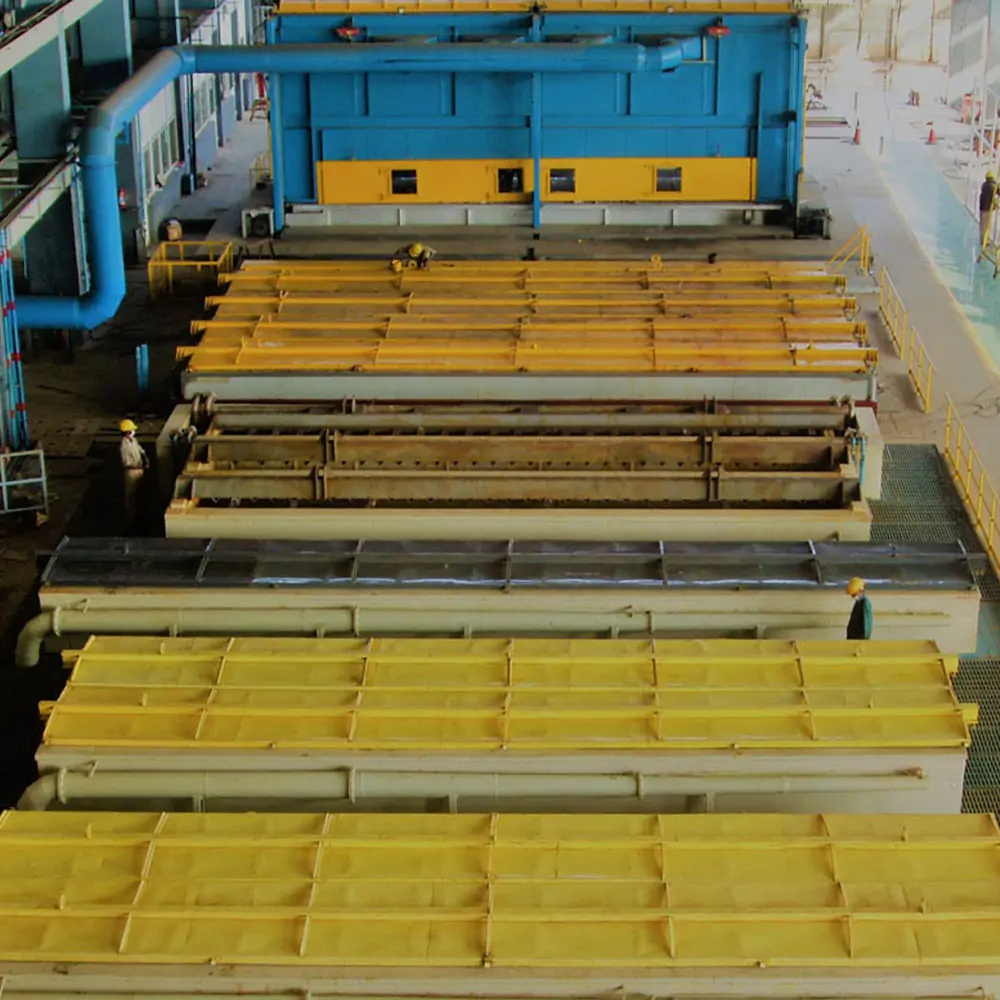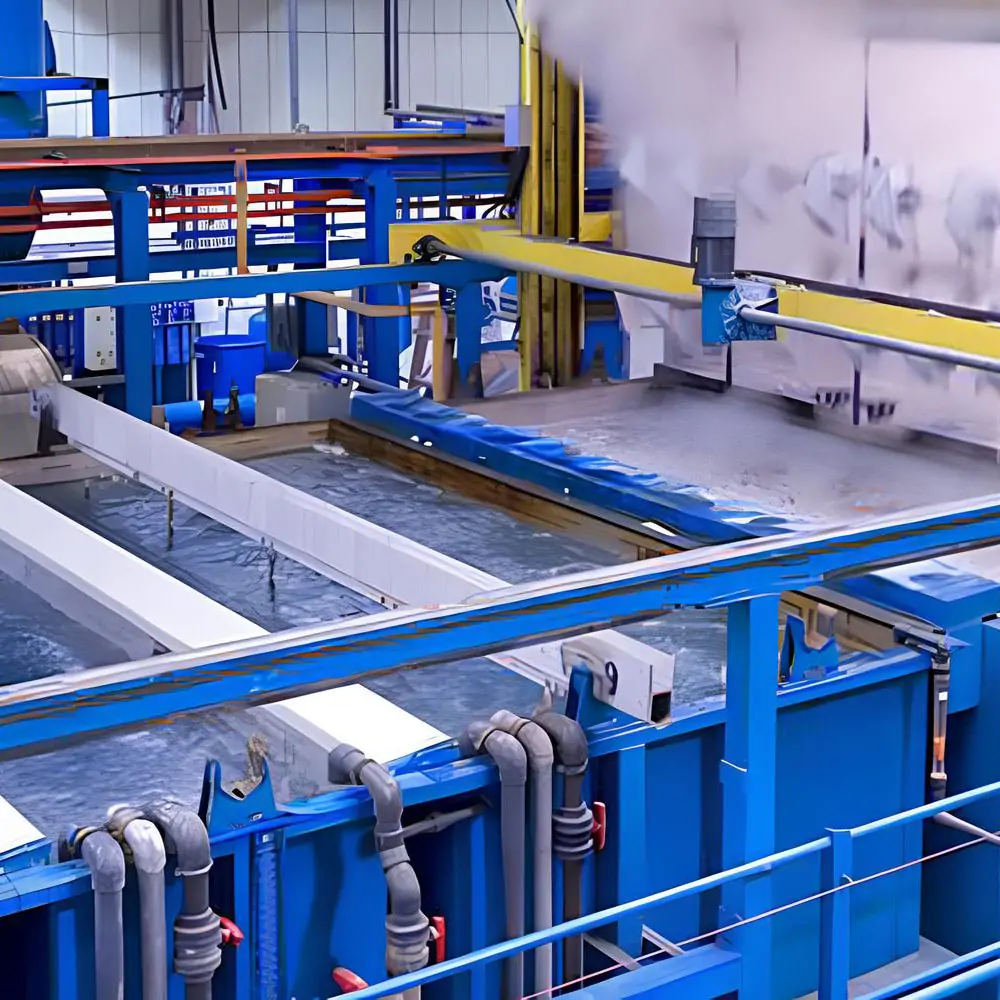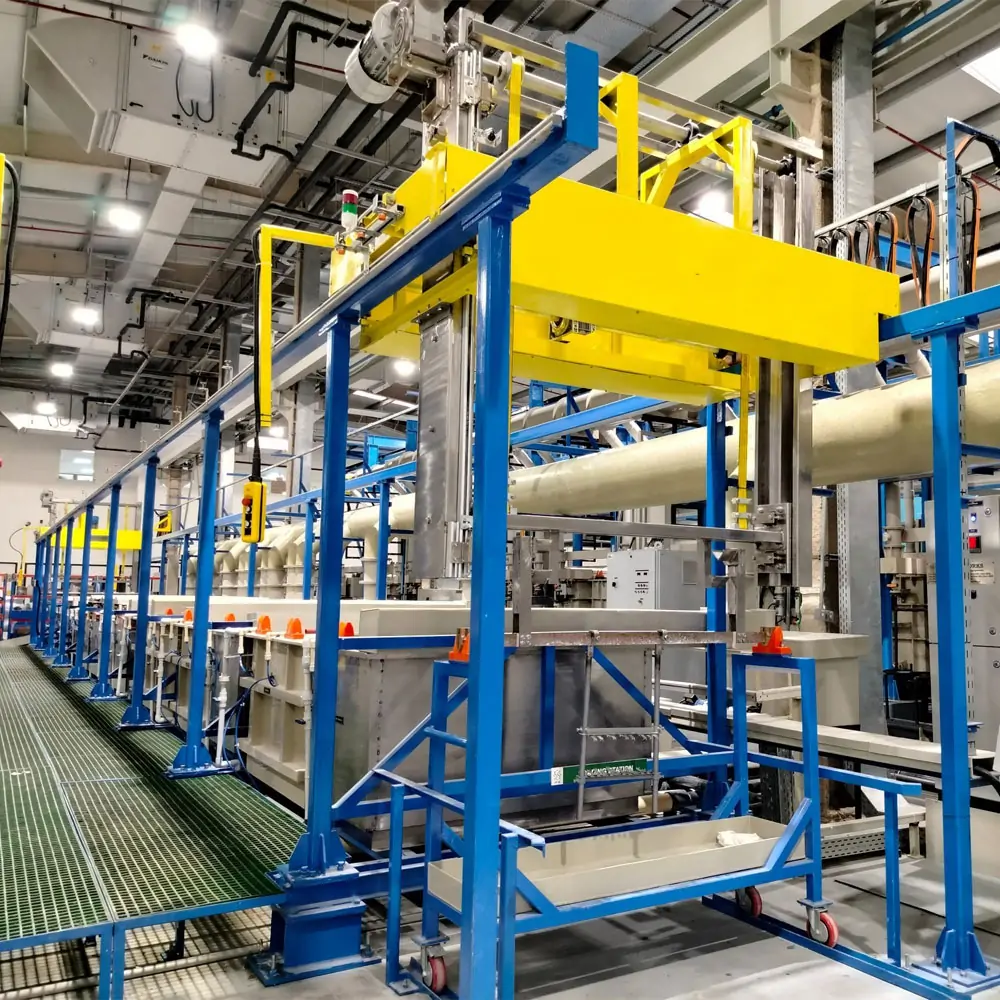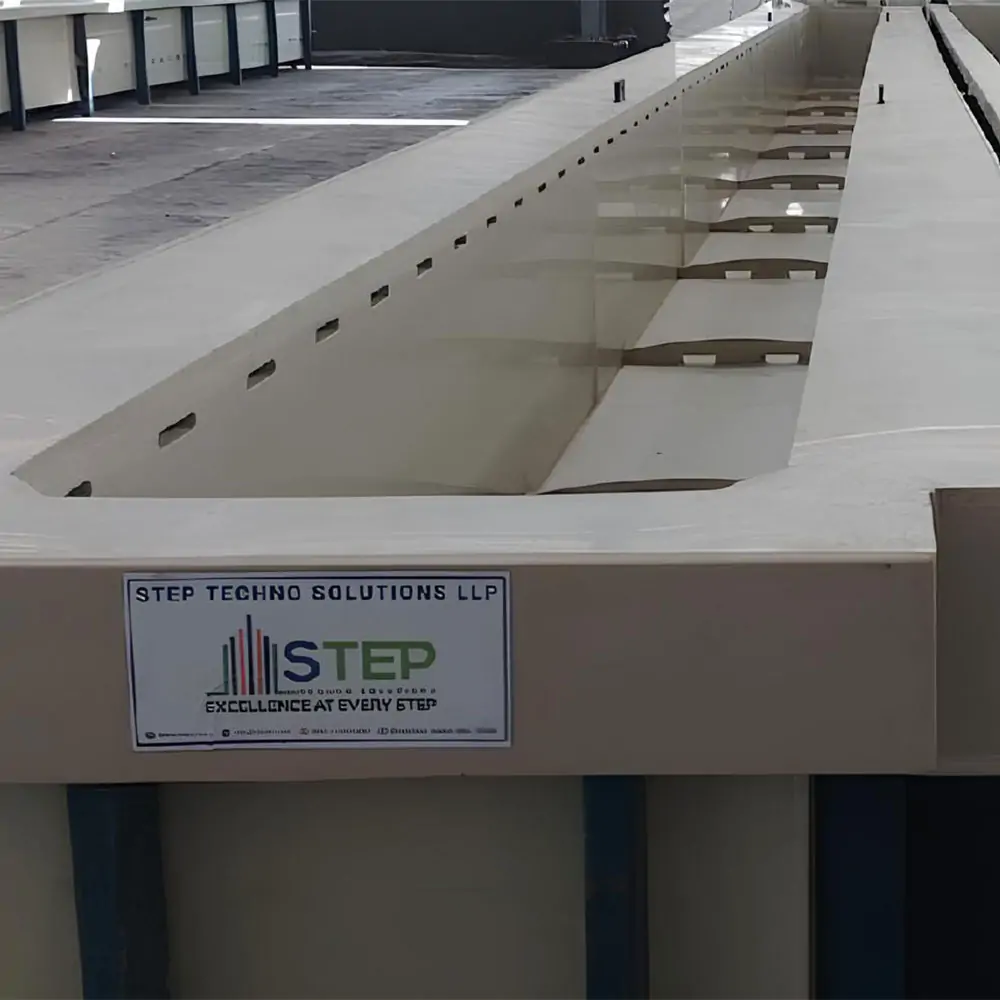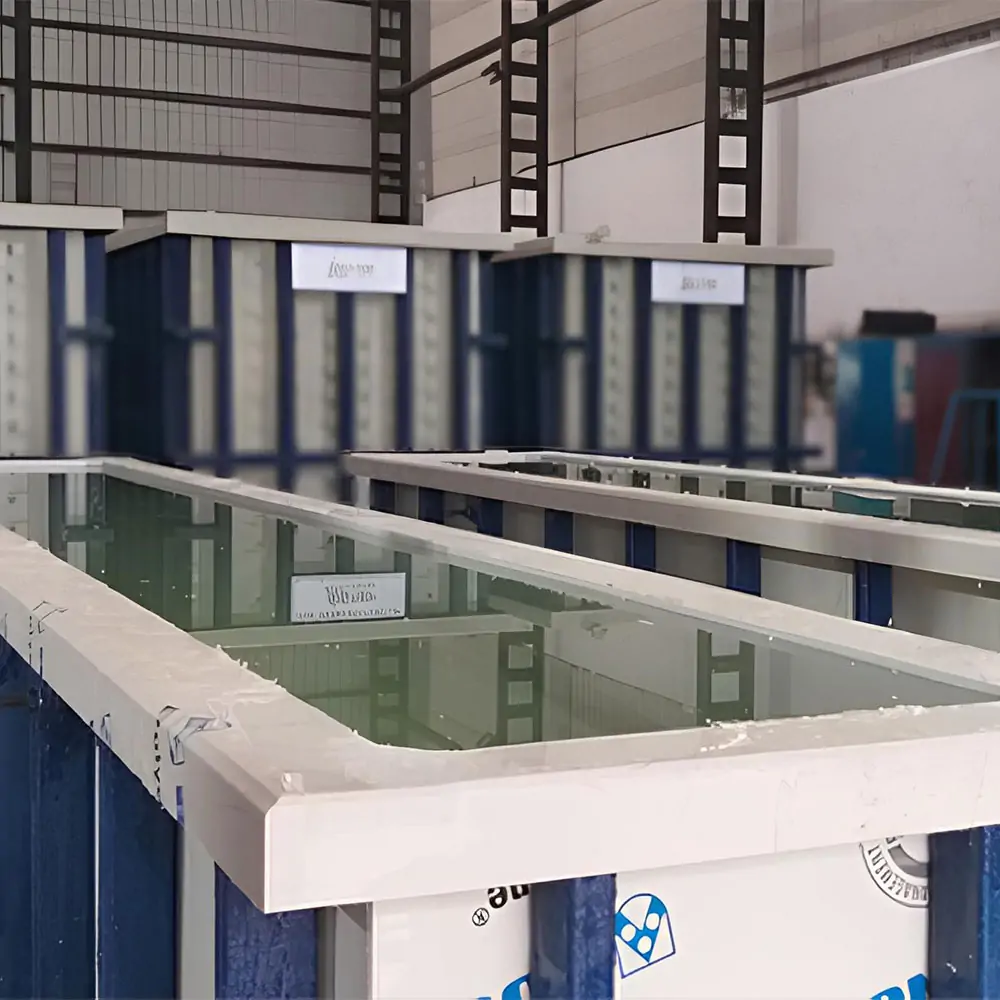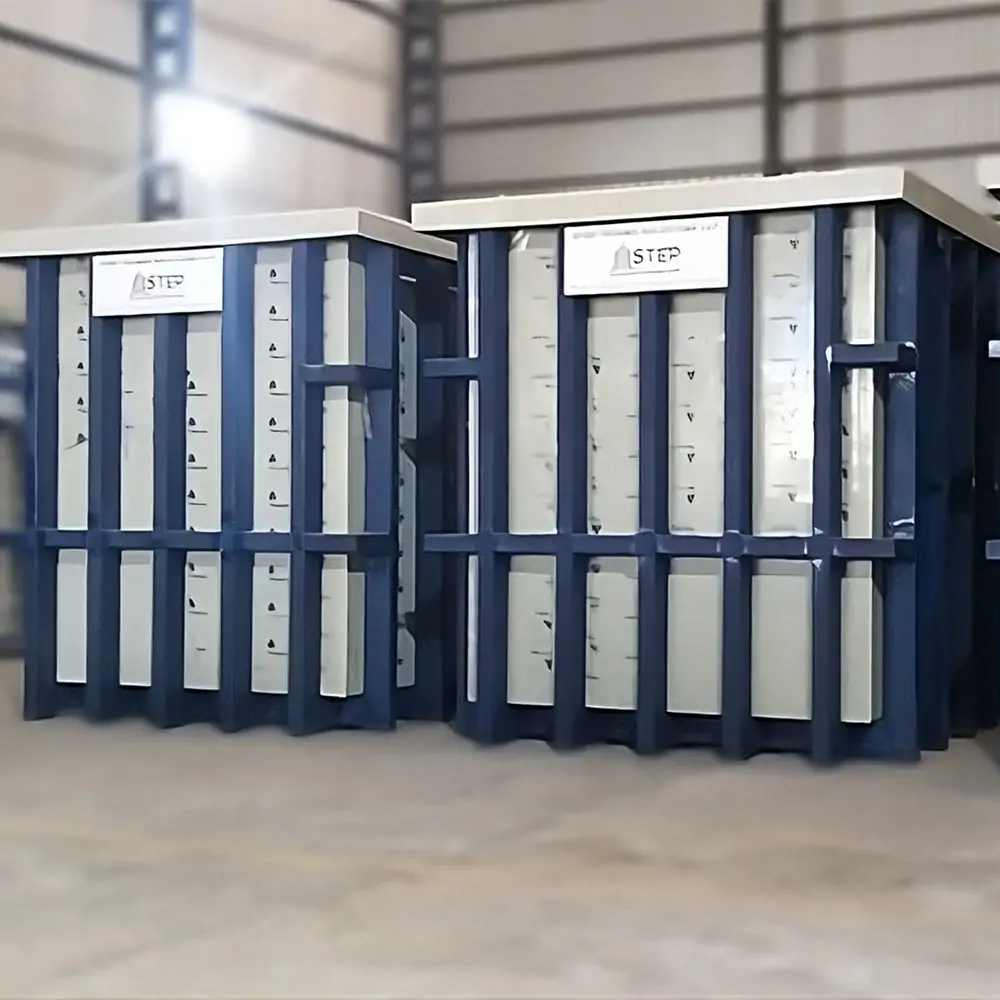In the world of metal finishing, anodizing plays a crucial role in enhancing the durability, appearance, and corrosion resistance of metal components. At the heart of this process is the anodizing tank—a key piece of equipment that ensures high-quality surface treatment. Whether you’re setting up a new metal finishing facility or upgrading your existing operations, understanding anodizing tanks is essential for achieving consistent, reliable results. This comprehensive guide will help you explore what anodizing tanks are, how they work, their different types, and how to maintain and troubleshoot them effectively.
What is an Anodizing Tank?
An anodizing tank is a specially designed container used in the anodizing process, where a metal part, usually aluminum, is submerged in an electrolytic solution. By passing an electric current through the tank, an oxide layer is formed on the surface of the metal. This layer improves corrosion resistance, enhances hardness, and provides a better surface for dyes or adhesives.
Benefits of the Anodizing Process
- Corrosion Resistance: The oxide layer formed protects the metal from environmental damage.
- Improved Surface Durability: It improves durability and resistance to wear.
- Aesthetic Value: Anodized parts can be dyed in various colors for decorative purposes.
- Electrical Insulation: It offers high electrical resistance, making it suitable for electronic components.
An anodizing tank is essential for this procedure because it guarantees homogeneous coating, efficient current flow, and precise temperature control.
Why Anodizing Tanks Are Essential in Metal Finishing
Anodizing tanks serve as the foundation for producing high-quality finishes. Without a properly designed tank, the anodizing process can suffer from uneven coating, overheating, contamination, or equipment failure. Tanks help maintain stable conditions such as temperature, electrolyte concentration, and agitation—all of which affect the final result. A well-built anodizing tank contributes to product consistency, reduced rework, and higher production efficiency.
Types of Anodizing Tanks
There are various types of anodizing tanks based on their material construction and design. Choosing the right type depends on the size of your operation, the type of metal being treated, and the chemicals used in your process.
Polypropylene (PP) Tanks
- Pros: Chemical-resistant, lightweight, and corrosion-resistant.
- Cons: Limited temperature tolerance compared to other materials.
Polyvinyl Chloride (PVC) Tanks
- Pros: Durable, cost-effective, good chemical resistance.
- Cons: Can warp under high heat, not ideal for continuous high-temperature applications.
Stainless Steel Tanks (with linings)
- Pros: Strong structure, long-lasting, withstands high temperatures.
- Cons: More expensive and requires proper linings to prevent corrosion from acids.
FRP (Fiber-Reinforced Plastic) Tanks
- Pros: Extremely durable, lightweight, and corrosion-resistant.
- Cons: Higher initial cost, but offers excellent long-term performance.
Factors to Consider When Choosing an Anodizing Tank
- Chemical Compatibility: Ensure the tank material can withstand acidic anodizing solutions.
- Temperature Requirements: Choose a tank that maintains consistent temperature control.
- Tank Size and Capacity: Match the tank size to the parts being anodized.
- Durability and Longevity: Invest in tanks that offer high resistance to wear and corrosion.
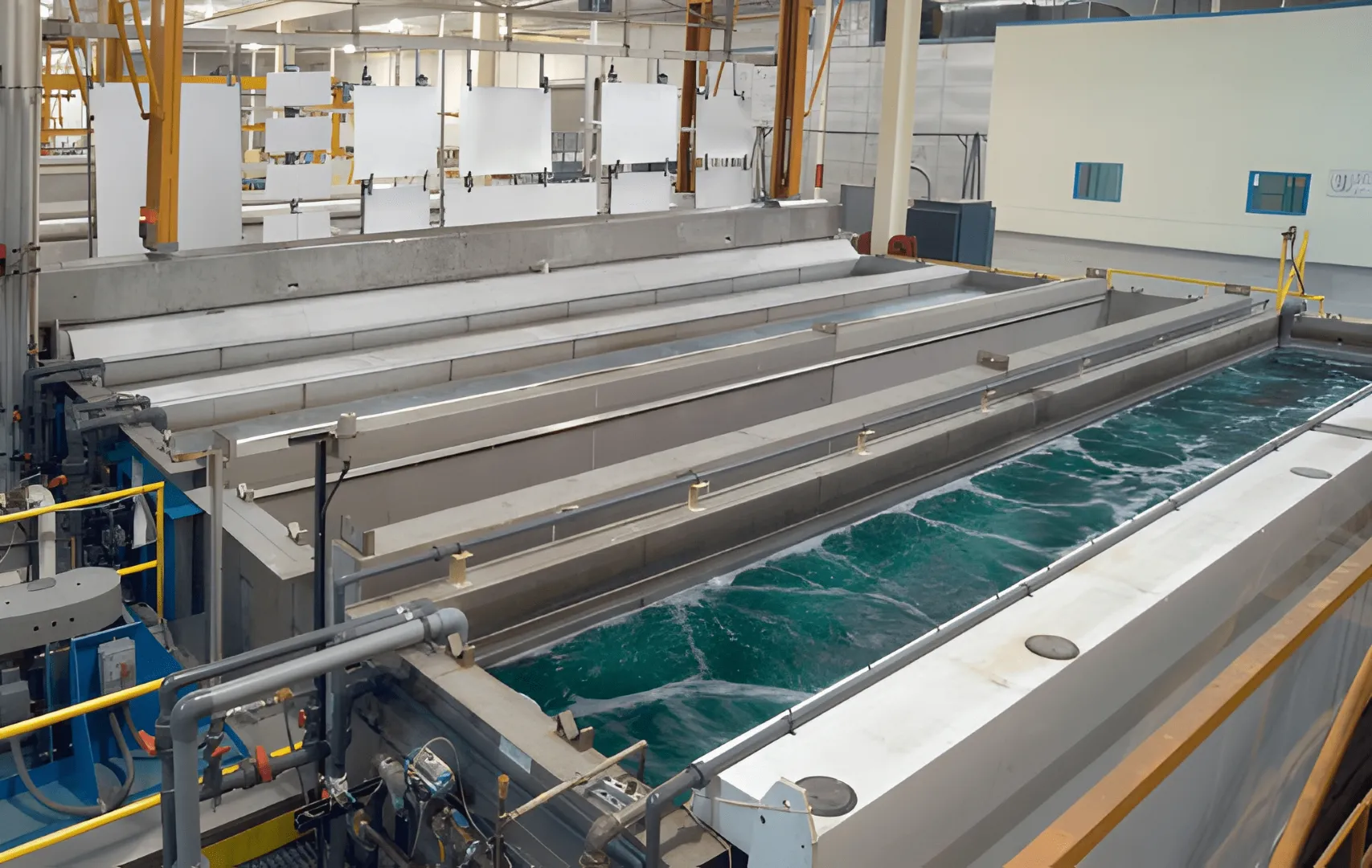
How to Set Up an Anodizing Tank in Your Metal Finishing Facility
Setting up an anodizing tank involves careful planning to ensure safety, efficiency, and optimal results. Here’s a simple step-by-step guide:
Step-by-Step Setup Guide
- Select the Right Location: Ensure the area has proper ventilation, drainage, and is compliant with local environmental regulations.
- Install the Tank Base: Position the anodizing tank on a level, acid-resistant floor.
- Connect Electrical Power Supply: Install DC power sources and bus bars for the anodizing process.
- Fill the Tank with Electrolyte: Usually, sulfuric acid is employed. Ensure the concentration is suitable for your process.
- Install Heating/Cooling Systems: Maintain the ideal electrolyte temperature using appropriate equipment.
- Set Up Agitation Devices: Use air spargers or mechanical agitation to promote even coating.
- Install Safety Gear: Set up eyewash stations, spill trays, and fume extraction systems.
Safety Precautions
- Always wear chemical-resistant gloves, goggles, and protective clothing.
- Ensure all wiring is properly insulated and grounded.
- Store chemicals in labeled, secured containers away from heat sources.
Maintenance Tips
- Clean the tank regularly to remove contaminants.
- Monitor electrolyte concentration and replenish when necessary.
- Inspect electrical connections and temperature controls frequently.
- Replace damaged or worn accessories promptly.
Anodizing Tank Accessories
To enhance the performance of an anodizing system, specific accessories are required:
- Cooling Systems: These help control the temperature of the electrolyte, preventing overheating that can damage the anodized layer or affect color consistency.
- Filtration Units: Filtration helps remove dirt and metal particles from the solution, ensuring the electrolyte remains clean for consistent results.
- Agitation Devices: Agitation ensures that fresh electrolyte contacts the metal surface, leading to more uniform coatings and better color absorption in dyed parts.
- Racks and Fixtures: Proper fixtures ensure parts are securely held during anodizing, maintaining good electrical contact, and avoiding short circuits.
- Ventilation Systems: These are crucial for removing harmful fumes generated during the anodizing process, protecting both workers and equipment.
Each accessory plays a role in ensuring the anodizing tank runs smoothly, efficiently, and safely.
Common Anodizing Tank Issues
Even with the best setup, issues may arise during operation. Here are some common problems and their solutions:
Uneven Coating
Cause: Poor agitation, inconsistent current, or dirty electrolyte.
Solution: Evaluate the moving systems, clean the solution, and verify the power input for durability.
Discoloration
Cause: Impurities in the electrolyte or incorrect temperature.
Solution: Refresh or filter the solution, and make sure the cooling system is operational.
Burning or Pitting
Cause: High current density or low acid concentration.
Solution: Modify the current parameters and measure the acid percentage.
Poor Adhesion of Dyes
Cause: Inadequate anodizing layer or contaminated surface.
Solution: Extend the anodizing time and make sure the pieces have been thoroughly cleaned before processing.
Routine inspection and immediate intervention assist to minimize production holdups and assure high-quality outcomes.
Who is the top anodizing tank manufacturer in India?
STEP® Techno Solutions LLP is India’s most renowned Anodizing Tank Manufacturer, known for providing high-quality, long-lasting, and effective solutions to the metal finishing industry. With years of industry experience, we produce anodizing tanks that exceed stringent quality, performance, and safety requirements. As a leading Anodizing Tank Manufacturer, we offer a wide range of tanks made from polypropylene (PP), FRP (Fiber-Reinforced Plastic), and lined stainless steel—each customized to meet the specific needs of various applications like aluminum anodizing, plating, and surface treatment. Our tanks are chemical-resistant, long-lasting, and designed for optimal operation under demanding industrial conditions. Whether you run a small workshop or a large-scale finishing plant, we ensures reliable performance, energy efficiency, and hassle-free maintenance. Known for on-time delivery, excellent customer support, and expert guidance, they are the go-to partner for businesses seeking robust anodizing tank systems. For cost-effective, high-performance anodizing tanks, STEP® Techno Solutions LLP stands as the top choice across India’s metal finishing sector.
Conclusion
Anodizing tanks are essential components in the metal finishing process, playing a key role in achieving durable, corrosion-resistant, and visually appealing surfaces. Understanding the types, setup procedures, necessary accessories, and maintenance needs will help you get the best performance from your anodizing system.
Whether you’re just getting started or looking to upgrade your facility, investing in the right anodizing tank ensures quality results and long-term reliability. For trusted solutions, expert guidance, and top-quality tanks, reach out to STEP® Techno Solutions LLP at +91 98988 75757 or email info@steptsl.com today.
FAQ
What is an anodizing tank?
An anodizing tank is a specifically built container for carrying out the anodizing process, which involves treating metal pieces in an electrolytic solution to form a protective and ornamental oxide coating.
Why is anodizing important in metal finishing?
Anodizing metals enhances their corrosion resistance, surface hardness, and attractiveness. It also enhances paint adhesion and provides electrical insulation, making it essential for both functional and decorative metal finishing.
What metals can be anodized using these tanks?
Aluminum is the most commonly anodized metal. However, other metals like titanium and magnesium can also be anodized using specially designed tanks and processes suited to each material.
What materials are anodizing tanks made from?
Anodizing tanks are typically made from polypropylene (PP), FRP, PVC, or lined stainless steel. Each material is chosen based on chemical resistance, temperature tolerance, and durability needs.
How do you choose the right anodizing tank?
Consider factors like tank size, chemical compatibility, temperature requirements, and the type of metal being processed. The right tank should match your production volume and ensure safe, effective operations.
Do anodizing tanks require accessories?
Yes, essential accessories include cooling systems, filtration units, agitation devices, and proper ventilation. These improve the process’s efficiency, safety, and ensure consistent, high-quality results every time.
How often should anodizing tanks be maintained?
Anodizing tanks should be inspected monthly. Clean the tank, check the solution level, test for contamination, and ensure all accessories like filters and cooling systems are working properly.
What are common problems with anodizing tanks?
Some frequent issues include uneven coating, pitting, browning, and poor dye consistency. These usually result from incorrect temperature, dirty solutions, or unstable electrical current during the anodizing process.
Is anodizing environmentally friendly?
Yes, when managed properly. Using fume extraction systems, chemical recycling, and regular maintenance helps reduce waste and make the anodizing process safer and more environmentally responsible.
Who manufactures anodizing tanks in India?
STEP® Techno Solutions LLP is India’s premier anodizing tank manufacturer, providing dependable, long-lasting, and customized tanks for a wide range of metal finishing uses across industries.

